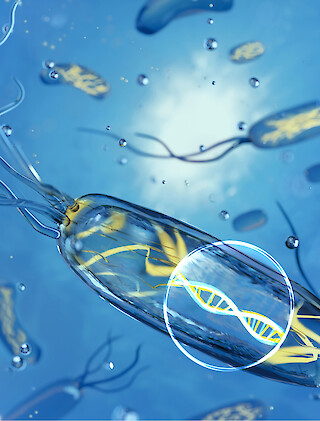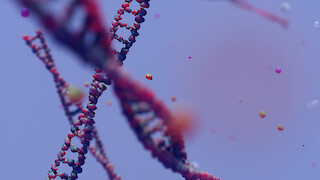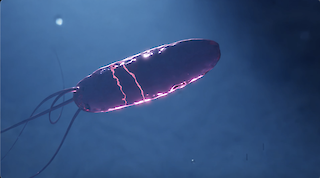The 3D animation «Exploring the Invisible» deals with a previously little known, scientifically complex subject – the ocean biome. An easily comprehensible and attractive mode of knowledge transfer is used to disseminate the research results in scientific publication formats. Communicating knowledge of this kind is a design challenge. The subject matter is complex, partly abstract, and the bacteria and their genetic makeup are invisible to the human eye. Thus, it is essential to design the content and visuals in a way that conveys them clearly. A 3D animation supports the communication of these research results to scientists and an interested public.
In her video abstract, Helena Klein translates topical scientific findings into a visual language which does justice to the highly complex scientific subject and also achieves the goal of interesting a wider audience in a project like this. In cooperation with the research institute Sunagawa Lab at ETH Zurich, she has delved deeply into the topic and turned it into a 3D animation. Applying a holistic and distinctive approach to her concept and design, she reconciles the traditional division between science-to-science communication and scientainment and invites viewers on a journey to a world that is not visible to the naked eye. Helena shows a marked understanding of the designer’s role, proactively seeking a dialogue with science and challenging its conventions. – Excerpt from the supporting statement of the Subject Area in Knowledge Visualization

«My BA project enables viewers to immerse themselves in an unknown, normally invisible world by means of a 3D animation. Complex subject matter can thus be conveyed in a comprehensible and visually tangible way.» – Helena Klein

«I see myself as acting as a link between design, knowledge transfer and science because suitable and effective communication will continue to be a very relevant concern.» – Helena Klein
